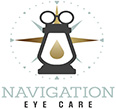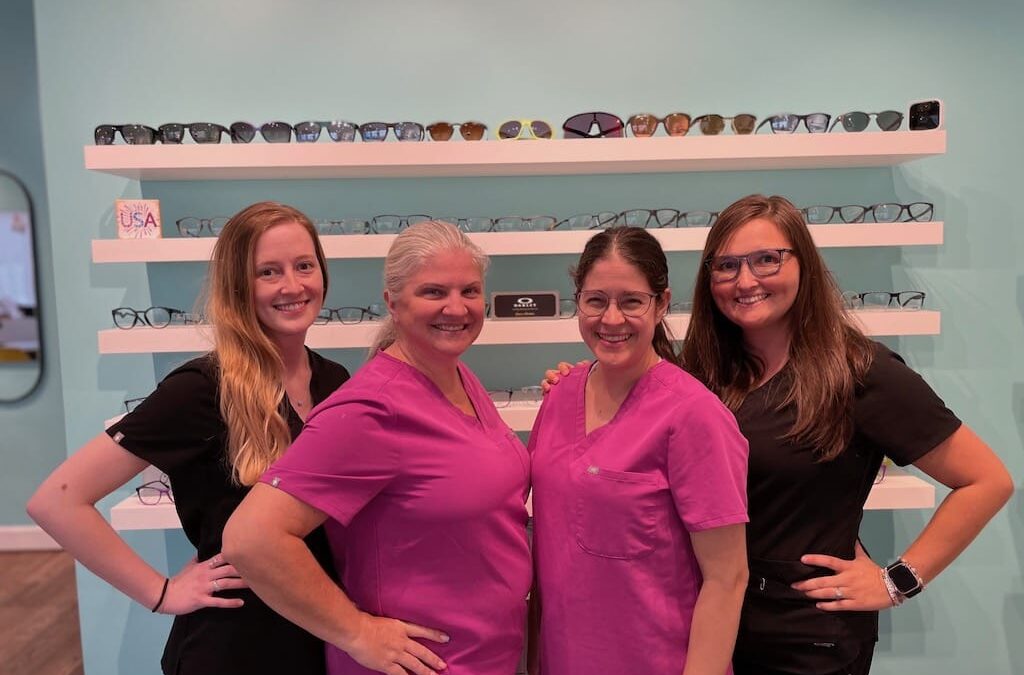Lifestyle Habits for Lubricated Eyes: Diet and Hydration Tips for Dry Eye Relief
Dry eye syndrome can be a persistent and uncomfortable condition, but did you know that your lifestyle habits, including diet and hydration, can play a significant role in alleviating symptoms? In this blog post, we’ll explore how simple lifestyle changes can help keep your eyes well-lubricated and comfortable. Consult Navigation Eye Care’s Optometrist Chesapeake VA for personalized advice tailored to your specific needs.
Understanding Dry Eye Syndrome
Before diving into lifestyle tips, let’s briefly review what dry eye syndrome is. Dry eye occurs when your eyes don’t produce enough tears or the quality of your tears is poor. Tears are essential for keeping your eyes moist, comfortable, and protected. Without an adequate tear film, you may experience symptoms such as burning, itching, redness, and sensitivity to light.
The Role of Diet in Dry Eye Relief
A balanced diet rich in certain nutrients can promote eye health and reduce the risk of dry eye symptoms. Consider incorporating the following elements into your diet:
- Omega-3 Fatty Acids: Omega-3s are known for their anti-inflammatory properties, which can help reduce eye inflammation associated with dry eye. Foods like fatty fish (salmon, mackerel, sardines), flaxseeds, chia seeds, and walnuts are excellent sources of omega-3s.
- Vitamin A: This vitamin is essential for maintaining healthy eye tissue and the production of tears. Include foods like carrots, sweet potatoes, spinach, and kale in your diet, as they are rich in vitamin A.
- Hydration: Staying well-hydrated is essential for overall health, including eye comfort. Aim to drink an adequate amount of water throughout the day to prevent dehydration.
Tips for Hydration and Eye Comfort
In addition to dietary changes, lifestyle habits can significantly impact eye hydration and comfort:
- Blink Regularly: Be conscious of your blinking, especially when using digital devices or reading. Blinking helps spread tears evenly across the surface of your eyes.
- Take Breaks from Screens: Extended screen time can contribute to dry eye symptoms. Follow the 20-20-20 rule: every 20 minutes, take a 20-second break, and focus on something at least 20 feet away.
- Use Humidifiers: Adding moisture to the air in your home or workplace with a humidifier can help prevent dry eyes, especially in dry climates.
- Wear Sunglasses: Protect your eyes from harsh sunlight and wind by wearing sunglasses with UV protection.
- Limit Smoke Exposure: Avoid exposure to smoke, whether from smoking or secondhand smoke, as it can irritate your eyes.
- Consult Navigation Eye Care: If you continue to experience dry eye symptoms despite making lifestyle changes, schedule an appointment with Navigation Eye Care’s Optometrist Chesapeake VA for a comprehensive eye exam. She can determine the underlying causes and recommend appropriate treatments, including prescription eye drops or therapies.
Dry eye relief can be achieved through simple yet effective lifestyle habits. By incorporating eye-healthy foods into your diet, staying hydrated, and adopting good eye hygiene practices, you can reduce the discomfort associated with dry eye syndrome. Remember that personalized guidance from Navigation Eye Care’s Optometrist Chesapeake VA is crucial for managing and treating dry eye effectively. By embracing these lifestyle habits, and you’ll be well on your way to enjoying comfortable and well-lubricated eyes.
Eyes on Safety: Creating a Kid-Friendly Home for Eye Accident Prevention
Children are curious explorers, and their safety is a top priority for parents. When it comes to childproofing your home, you likely focus on common hazards like sharp objects, electrical outlets, and stairs. However, eye accidents can also occur, and it’s essential to create a safe environment for your little ones. In this article, we’ll discuss practical steps to childproof your home for eye accident prevention. Schedule an appointment with Navigation Eye Care’s Optometrist Chesapeake VA for additional guidance tailored to your family’s specific needs.
Childproofing for Eye Safety
Preventing eye injuries at home requires a combination of awareness, education, and practical steps to minimize risks. Here’s how to create a kid-friendly home for eye accident prevention:
1. Childproof Hazardous Areas
- Bathroom: Ensure that cleaning products, toiletries, and medications are stored out of reach or in childproof cabinets. Install soft, cushioned covers on faucet handles and bathtub spouts to prevent head injuries during bath time.
- Kitchen: Keep sharp objects like knives and scissors stored safely in drawers or cabinets with childproof locks. Secure heavy appliances, such as blenders and food processors, to prevent tipping.
- Garage/Workshop: Store tools, chemicals, and equipment securely and out of children’s reach. Use childproof locks on toolboxes and cabinets.
2. Cover and Secure Sharp Corners
Furniture with sharp corners can pose a risk to curious children. Invest in corner protectors or padding to soften the edges of tables, countertops, and furniture.
3. Secure Window Blind Cords
Window blind cords can be a strangulation hazard. Choose cordless window coverings or install cord cleats to keep cords out of reach.
4. Childproof Electrical Outlets
Install outlet covers or safety plugs to prevent children from inserting objects into electrical outlets.
5. Use Safety Gates
Safety gates are essential for preventing falls down stairs. Install gates at both the top and bottom of staircases.
6. Store Hazardous Materials Safely
Store cleaning products, chemicals, and paints out of children’s reach in locked cabinets. Ensure that lids are securely closed.
7. Educate and Supervise
Teach your children about the dangers of touching their eyes with dirty hands or foreign objects. Supervise their activities to prevent accidents.
8. Provide Protective Eyewear
If your child is involved in activities that could lead to eye injuries, such as sports or crafting, provide them with appropriate protective eyewear.
9. Childproof Play Areas
Ensure that play areas are free from tripping hazards and sharp objects. Use soft play mats to cushion falls.
10. Seek Regular Eye Check-ups
Schedule regular eye check-ups with Navigation Eye Care’s Optometrist Chesapeake VA to monitor your child’s eye health and detect any issues early.
Recognizing Eye Injury Signs
Despite your best efforts, accidents can happen. It’s crucial to recognize the signs of an eye injury and take immediate action:
- Redness or irritation
- Pain or discomfort
- Swelling or bruising around the eye
- Vision changes or loss
- Foreign object in the eye
- Excessive tearing or discharge
If your child experiences any of these symptoms, seek immediate medical attention from Navigation Eye Care or an emergency room.
Creating a kid-friendly home for eye accident prevention involves a combination of vigilance, education, and practical measures. By childproofing your home and teaching your children about eye safety, you can significantly reduce the risk of eye injuries. Remember that regular eye check-ups with Navigation Eye Care’s Optometrist Chesapeake VA are essential for monitoring your child’s eye health and ensuring early detection and treatment of any issues. With these precautions in place, you can enjoy peace of mind while your children explore and learn in a safe environment.

